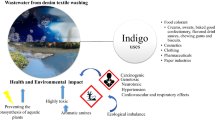Abstract
2,4-Dichlorophenol used in the manufacture of pesticides, germicides, resins, seed disinfectants and antiseptics, if disposed untreated causes greater havoc for land and aquatic environment. In all the earlier works, 2,4-dichlorophenol has been fed along with easily biodegradable substrate, glucose as one of the constituents. A modified 4-stage RBC was used for the biodegradation studies of 2,4-dichlorophenol. The micro organisms attached to the disks were specially acclimatised to the extent that the 2,4-dichlorophenol alone serves as the sole carbon source supporting their metabolic activities. The RBC was operated at 12 rpm. The toxic substrate removal studies were carried out in the hydraulic loading rates ranging from 0.005 m3/m2/d to 0.035 m3/m2/d and organic loading rates from 0.35 g/m2/d to 6.15 g/m2/d. A correlation plot between 2,4-dichlorophenol removal and organic loading rate is presented. A mathematical model is proposed using regression analysis.
Similar content being viewed by others
Author information
Authors and Affiliations
Additional information
Received: 14 September 1998
Rights and permissions
About this article
Cite this article
Swaminathan, G., Ramanujam, T. Effect of substrate concentration on biodegradation of 2,4-dichlorophenol using modified rotating biological contactors. Bioprocess Engineering 21, 169–173 (1999). https://doi.org/10.1007/s004490050658
Issue Date:
DOI: https://doi.org/10.1007/s004490050658




